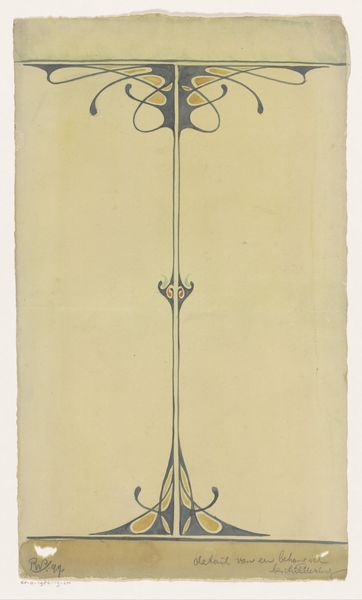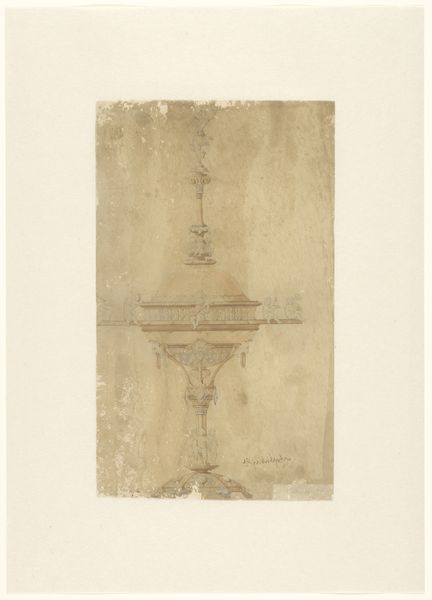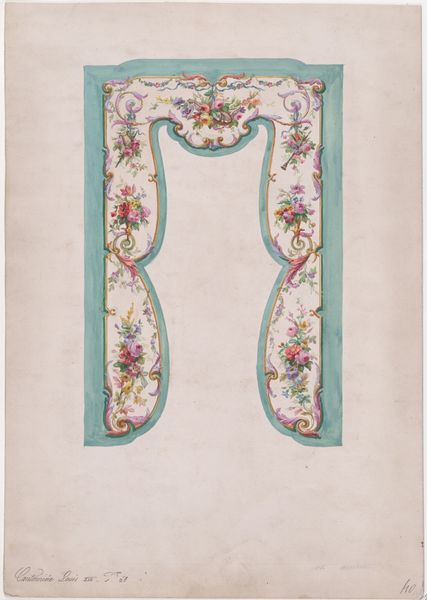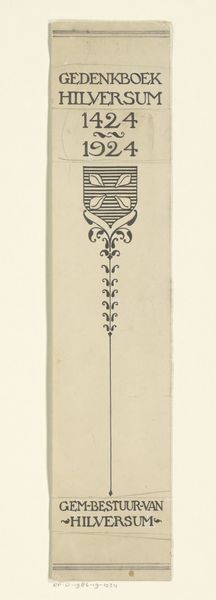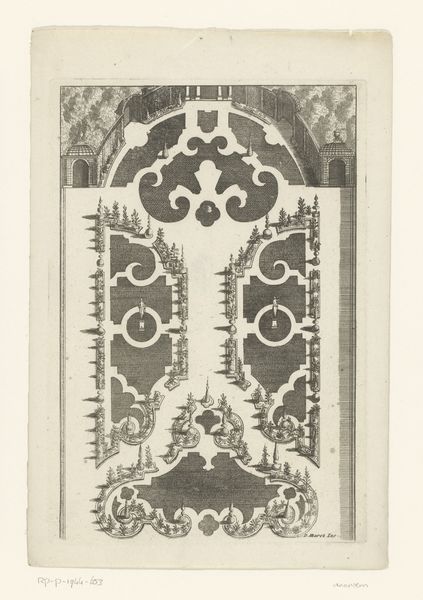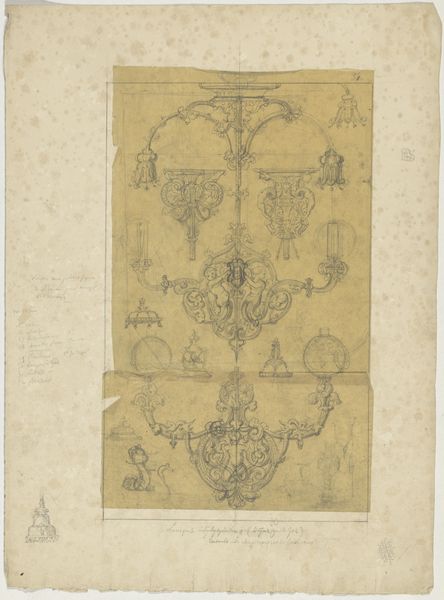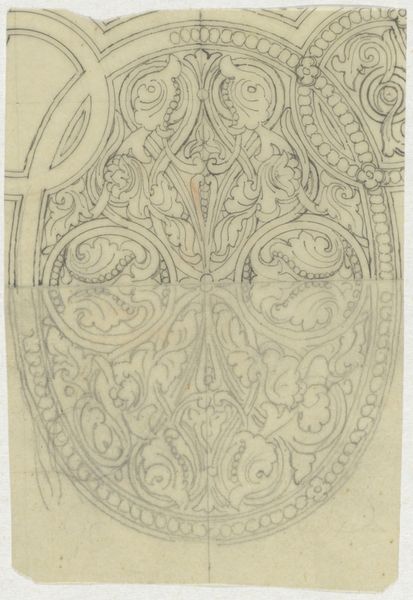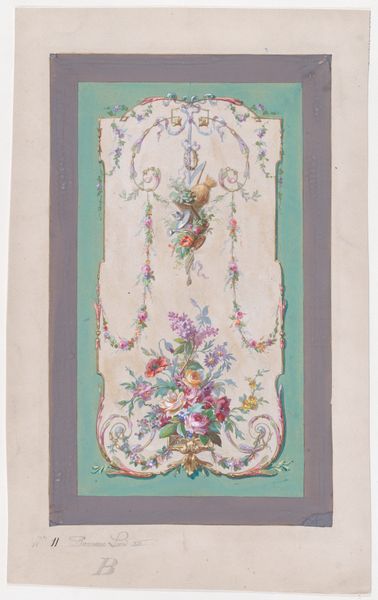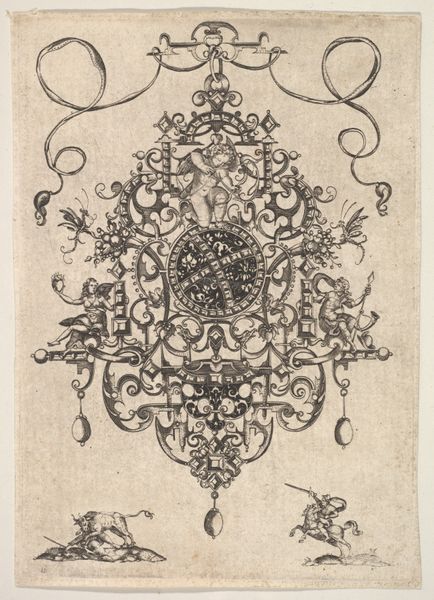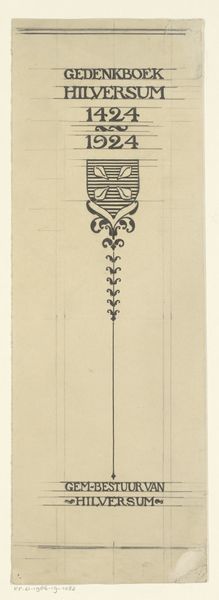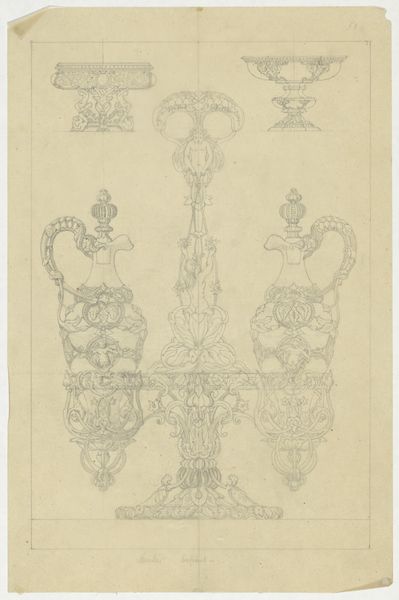
drawing, paper, watercolor
#
drawing
#
water colours
#
paper
#
watercolor
#
romanticism
#
watercolour illustration
#
decorative-art
#
watercolor
Dimensions: height 358 mm, width 158 mm, height mm, width mm
Copyright: Rijks Museum: Open Domain
Curator: This drawing is titled "Ontwerp voor een dekselbeker", or "Design for a Covered Cup" by Frédéric-Jules Rudolphi, dating back to around 1845-1855. It's rendered in watercolor on paper. Editor: It looks like something from a fairytale, but it feels slightly...unfinished? What can you tell me about this piece? Curator: The design immediately places itself within the broader cultural narrative of decorative arts deeply entwined with socio-political displays of power. Who was it intended for and in what space might it reside? These are useful starting points when thinking about this object and its significance within broader 19th-century class structures and aesthetic trends. Editor: I see. So, this cup wasn't just about holding liquid, but about status? Curator: Precisely! How do you think this artwork interacts with, or perhaps challenges, prevailing notions of gender and identity of that time period? Considering that many decorative art pieces were produced by women or were incorporated in elite domestic environments largely shaped by women. What does its function and style communicate, intentionally or otherwise? Editor: I never thought about decorative arts in terms of gender! I suppose this design could be seen as reinforcing the association of women with domesticity and display. Curator: Exactly. Now, considering this piece and the intersection of class, gender, and artistic expression. In this period, craftmanship starts to become feminized while high art remains stubbornly coded as masculine. So how do we contextualize decorative arts when social hierarchies are often encoded in seemingly innocuous design objects? Editor: Wow, I am certainly leaving with more to think about than I had anticipated! Curator: It is by looking critically that objects like these begin to reflect upon and challenge some of the basic cultural and aesthetic assumptions that persist today.
Comments
No comments
Be the first to comment and join the conversation on the ultimate creative platform.
